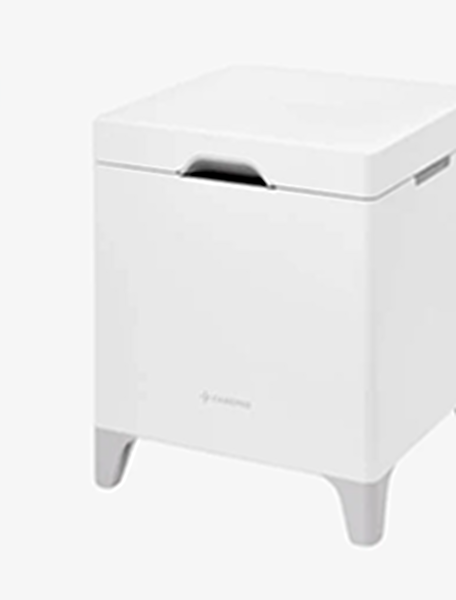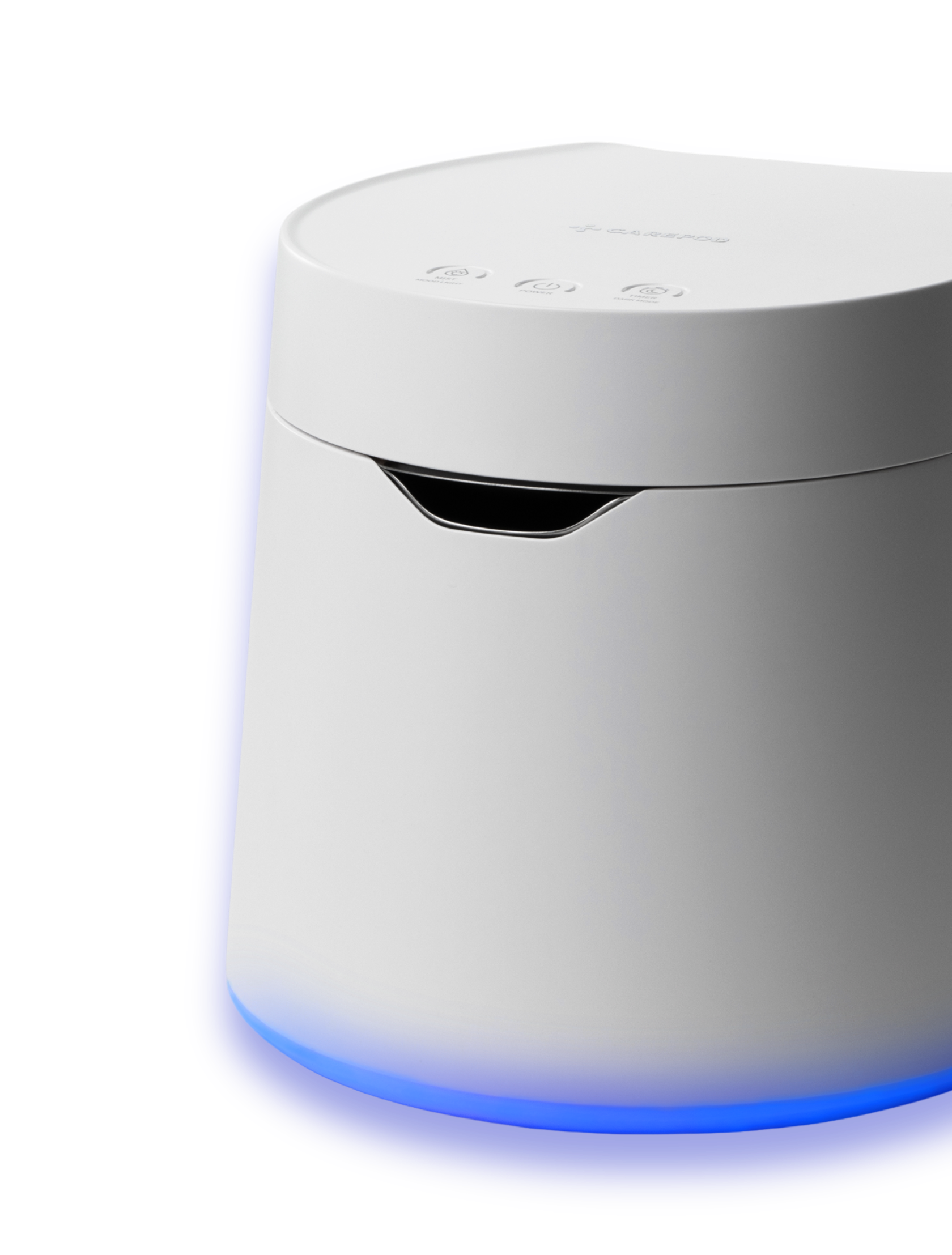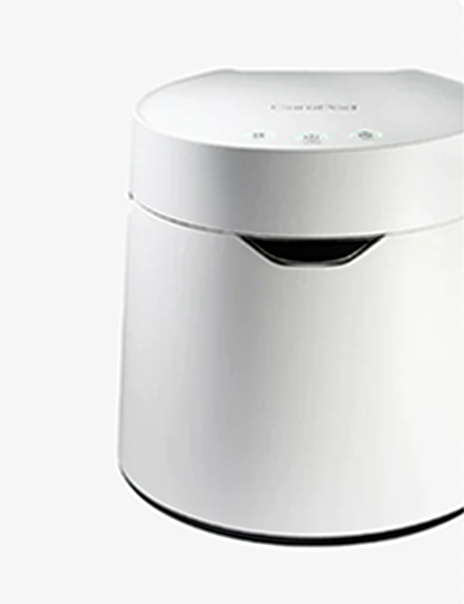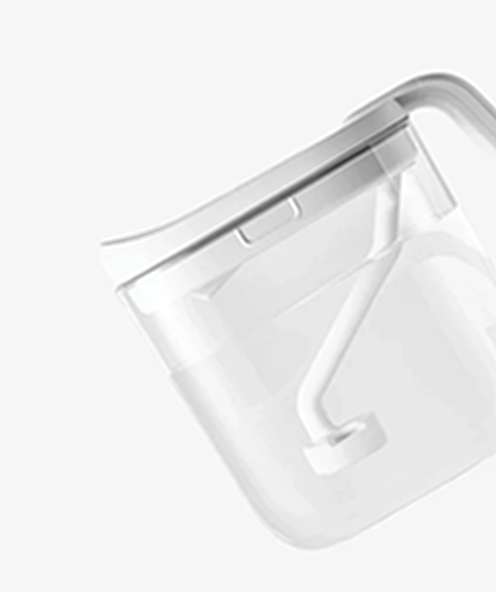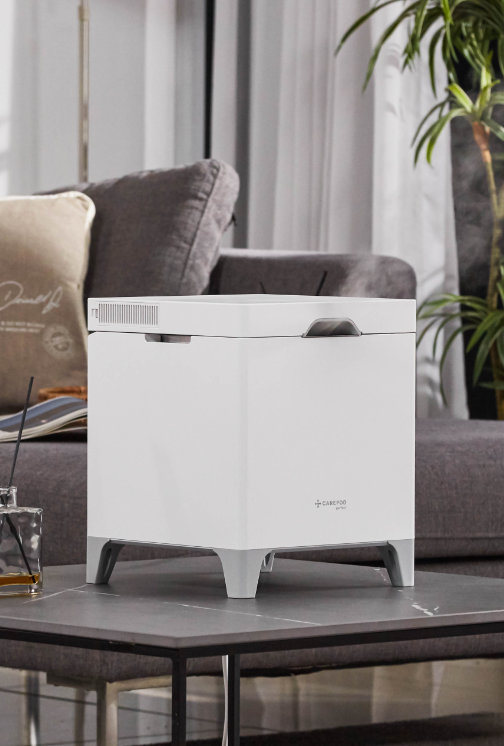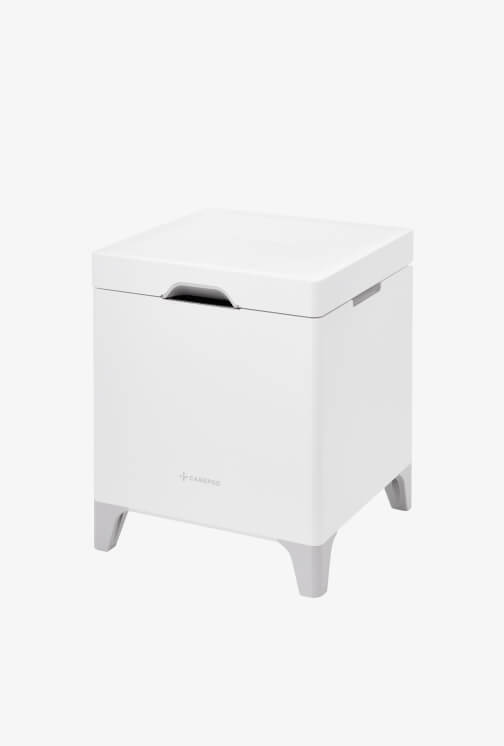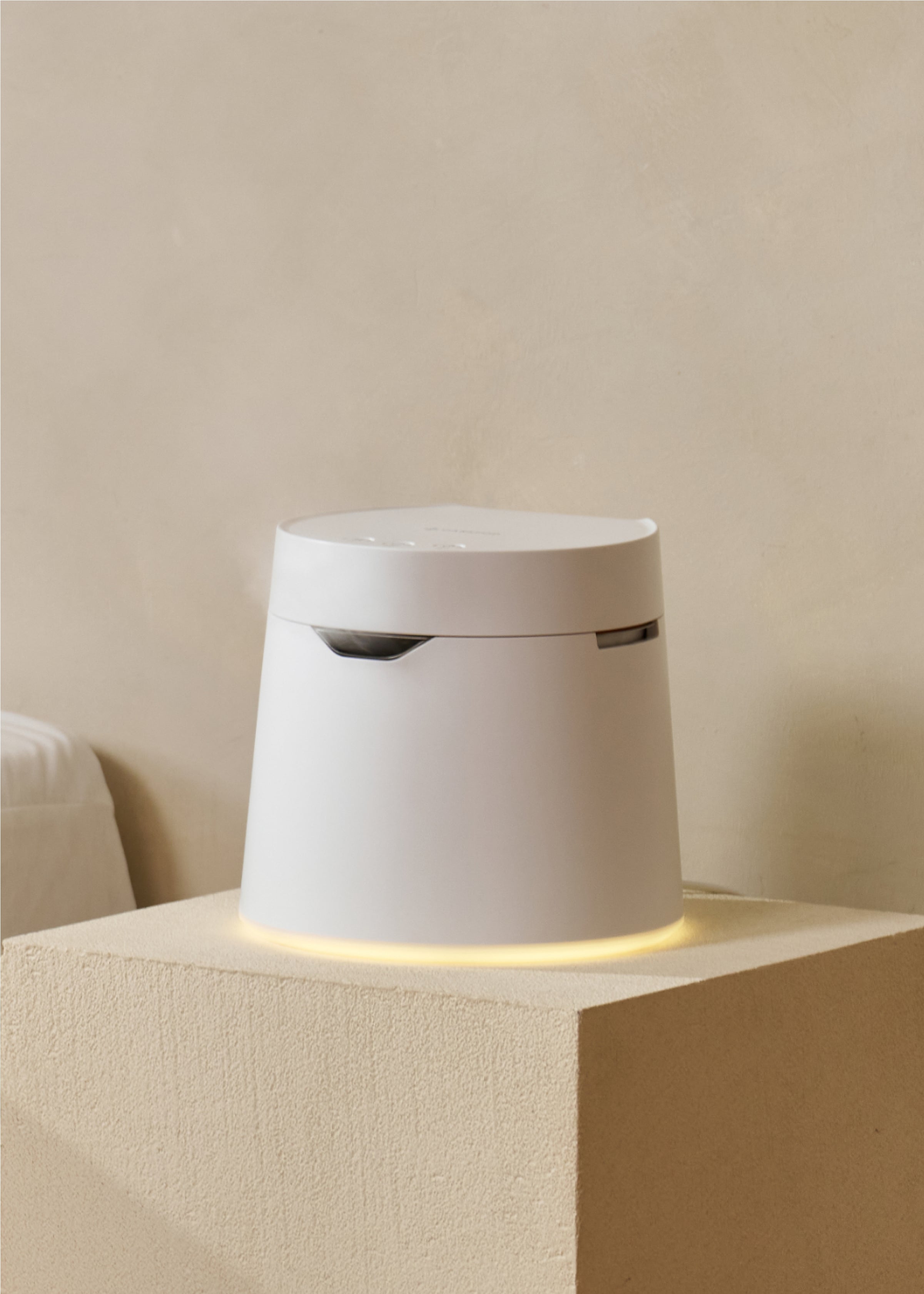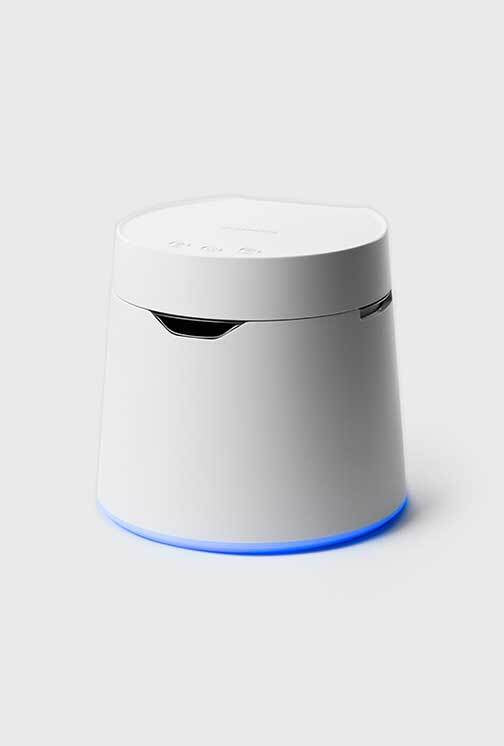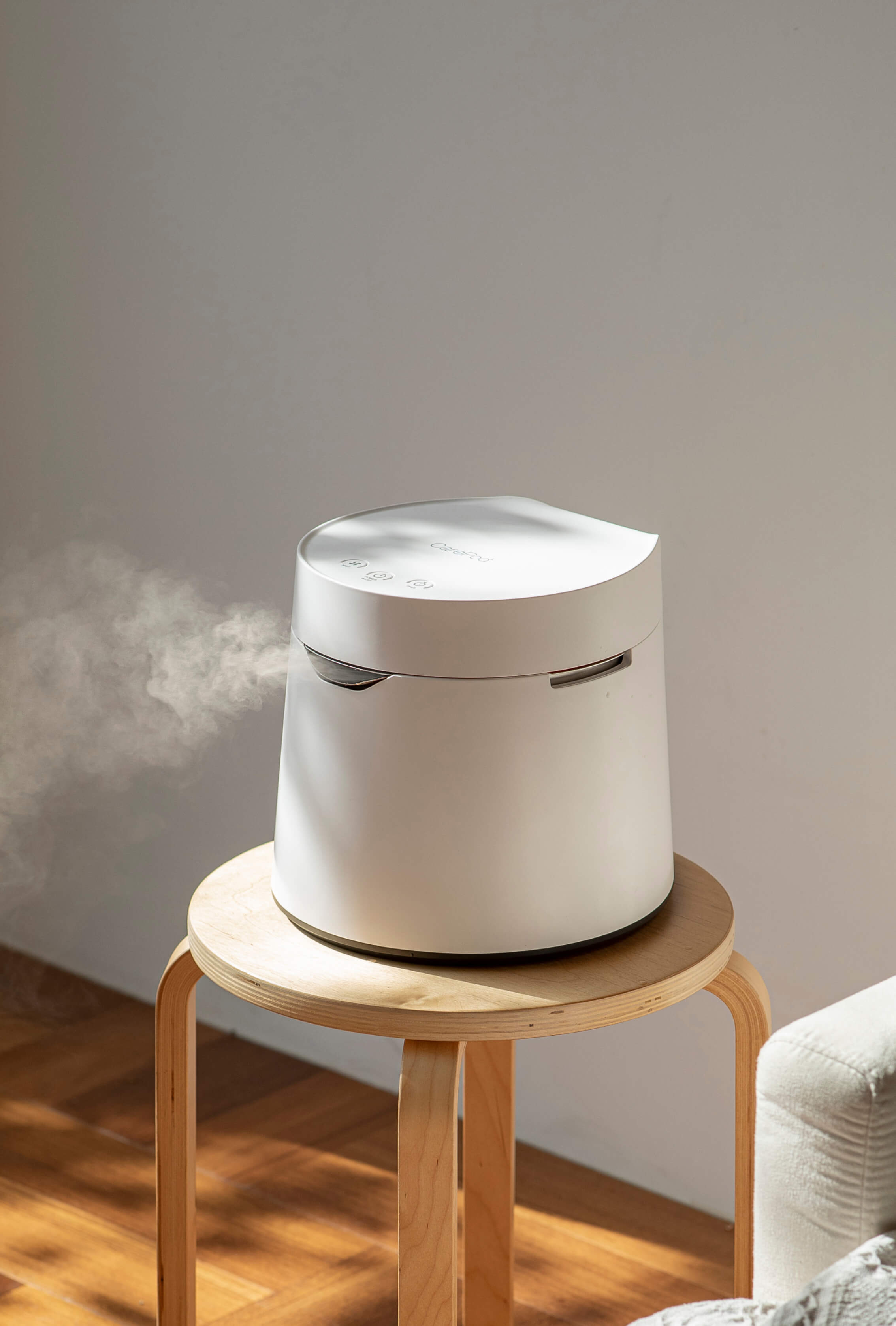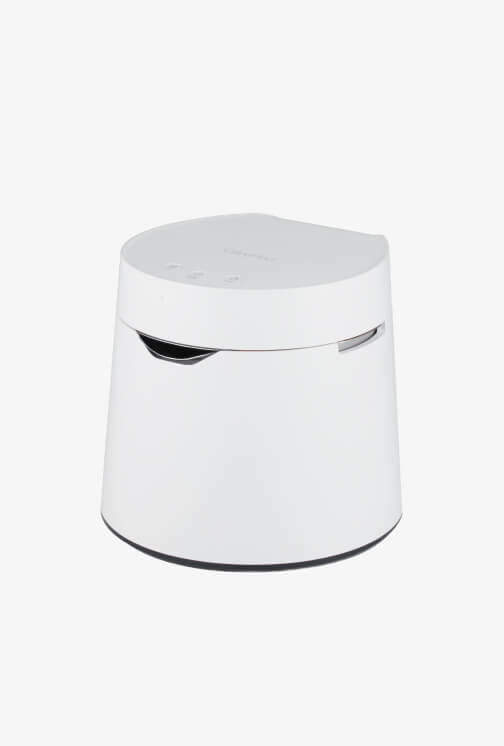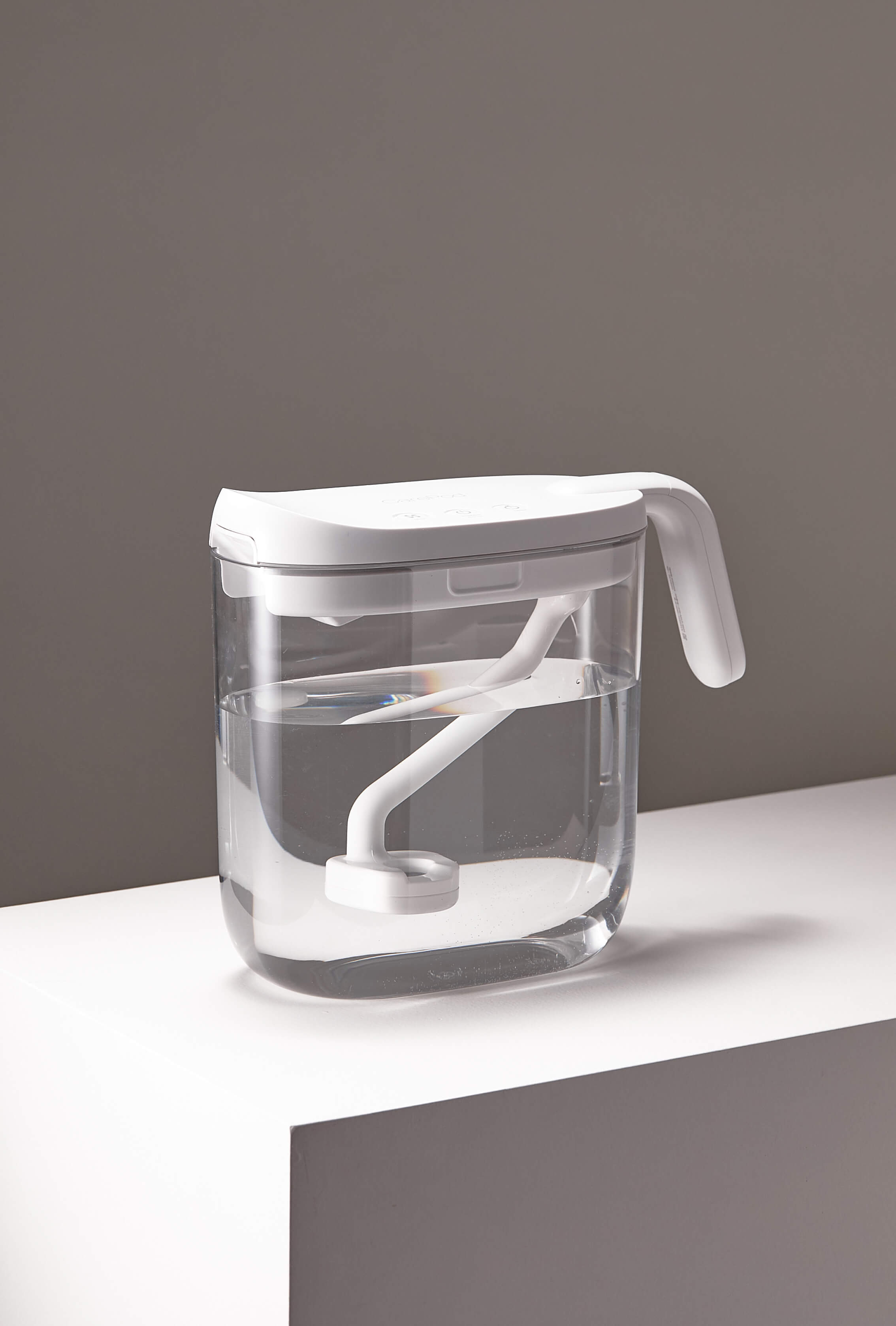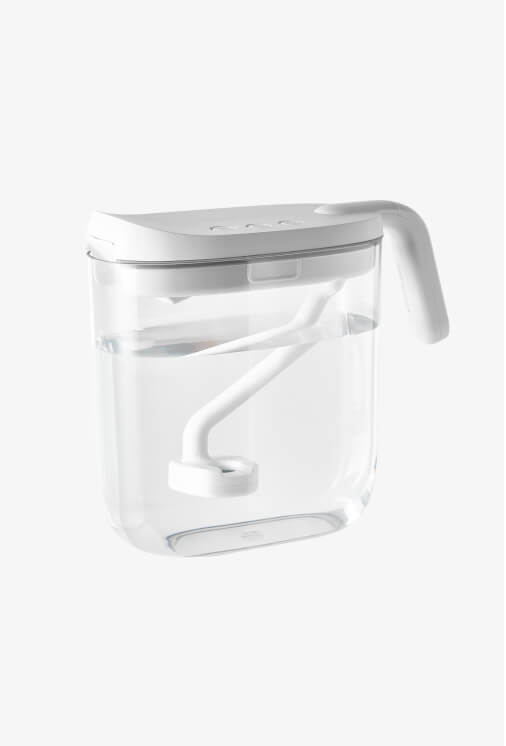Evaporative Humidifiers: Everything You Need to Know

While all humidifiers add moisture into the air and can serve great benefits for your health and your home, they may do so in different ways. There are four main types of humidifiers: ultrasonic humidifier, evaporative humidifier, steam vaporizer, and whole-home humidifier.
So if you're looking into buying an air humidifier and are confused about all the different types and names... Well, we're here to help.
In this series, we'll overview the different kinds of humidifiers, and in this article, we'll cover the evaporative humidifier.
How It Works
Evaporative humidifiers are the most common type, operating on a simple scientific principle. Think of it this way: if you leave a glass of water out in the open for an extended period of time, the water will eventually turn into vapor — the natural process of evaporation. An evaporative humidifier uses a simple mechanism to speed up this process.
A wick filter, typically a mesh material made of cloth or paper, draws water up from the reservoir. A built-in fan blows over the wick, allowing the water to evaporate out of the device and into the air.
This type of humidifier is self-regulating — as the device expels moisture and the humidity in the room increases, the process of evaporation will naturally slow down and the humidifier will produce vapor at a lower rate.

Benefits
Evaporative humidifiers are fairly hygienic. As opposed to their ultrasonic counterparts, they do not produce significant white dust, since the mesh filter within the device is typically able to trap mineral deposits form the water supply.
These kinds of humidifiers are cool-mist and do not pose a burn risk to pets and children, since they simply evaporate water at room temperature rather than generating heat.
As discussed in previous articles, too much humidity in the air can cause problems like mold and bacteria growth. Since evaporative humidifiers are self-regulating, you typically won't have to worry about excessive moisture in the air and frequently monitoring the humidity level, as with an ultrasonic humidifier, for example.
Drawbacks
Since evaporative humidifiers require an internal fan to blow out the water vapor, they generally do produce an operating noise louder than that of their ultrasonic counterparts. So if you're sensitive to the stirring sound of a fan or a light sleeper, you might want to keep your evaporative humidifier in a larger living space instead of your bedroom, for example, where the noise level will be much more pronounced.
Unlike ultrasonic humidifiers, evaporative models are usually much bulkier in structure, since they needs room for large parts like the filter, fan, and water tank. However, most devices should be able to fit on a table or countertop, and some have wheels for a portable design.
While evaporative humidifiers are generally more affordable than ultrasonic ones when it comes to base unit price, there isn't really a long-term cost advantage, since you'll have to deal with the recurring costs of replacement filters.

How To Clean and Maintain
Keep in mind that with an evaporative humidifier, you'll have to clean the device itself as well as the filter in order to prevent bacteria, mold, and mineral buildup over a period of time.
While using tap water in an evaporative humidifier should be okay, thanks to the filtration system which can pick up most contaminants, the safest option is still to use purified or distilled water.
According to the EPA, you should be sure to thoroughly clean the inside of your humidifier every three days. "Empty the tank and use a brush or other scrubber to clean it. Remove any scale, deposits, or film that has formed on the sides of the tank or on interior surfaces," they advise. One common cleaning method is to rinse the inside with lukewarm water and use white vinegar or bleach as a disinfectant. However, avoid using detergents or other abrasive cleaning agents, which can damage the inside of the device.
With an evaporative humidifier, you'll need to go through the additional step of disinfect the device's filter. Having such large surface area, the mesh screen can essentially become a breeding ground for bacteria and mold if not cleaned properly. One common method is soak the wick in a water and vinegar solution for 20-30 minutes. Avoid using bleach or detergents, which may compromise the material's structure. Once done, allow the wet filter to dry at room temperature, but don't use a heating source to speed up the process, as this can also damage the mesh.
You'll probably need to replace the filter every 1-3 months, depending on its condition. When in doubt, simply throw away the old filter and replace with a new one — don't try to hang onto a dirty filter just to save a few extra dollars. After all, the potential cost of an new filter once in a while is nothing compared to the expenses for health risks that may arise from using a dirty filter.

FAQ
- How do I tell if my evaporative humidifier is working?
You should hear the light sound of a fan and feel a cool breeze coming from your evaporative humidifier, though the mist from the device may not be visible. If you suspect that the humidifier is broken, turn it off and try to fix the issue before continuing to use it.
- When should I turn on my humidifier?
Any time, day or night, when you're at home is fine. Turn off the humidifier when you're away from the house and when the humidity level reaches close to 60%, as between 30% and 50% is the ideal indoor range.
- What are the benefits of using a humidifier?
By adding moisture into the surroundings, air humidifiers may be able to help with health issues such as dry skin, congested nasal passages, eyes/nose/throat irritation, and other common cold and allergy symptoms. Humidifiers can also improve your overall home environment, serving benefits for your plants, pets, and furniture.
Final Thoughts
At the end of the day, the best type of humidifier is the one that best suits your needs and preferences.
To summarize, evaporative humidifiers work by using a wick and fan system to speed up the natural process of evaporation from a water tank. They're simple, sanitary, self-regulating, and safe devices that can add healthy moisture to your home environment. However, they are fairly bulky in size, produce an audible operating noise, and require replacement filters each month or so. Also keep in mind that you'll have to clean out both the tank and the filter with warm water and some kind of mild disinfectant such as white vinegar, ideally every few days.
In the end, if maintained properly through the years, an evaporative humidifier could be a great investment that provides tremendous benefits for your health and overall well-being.
